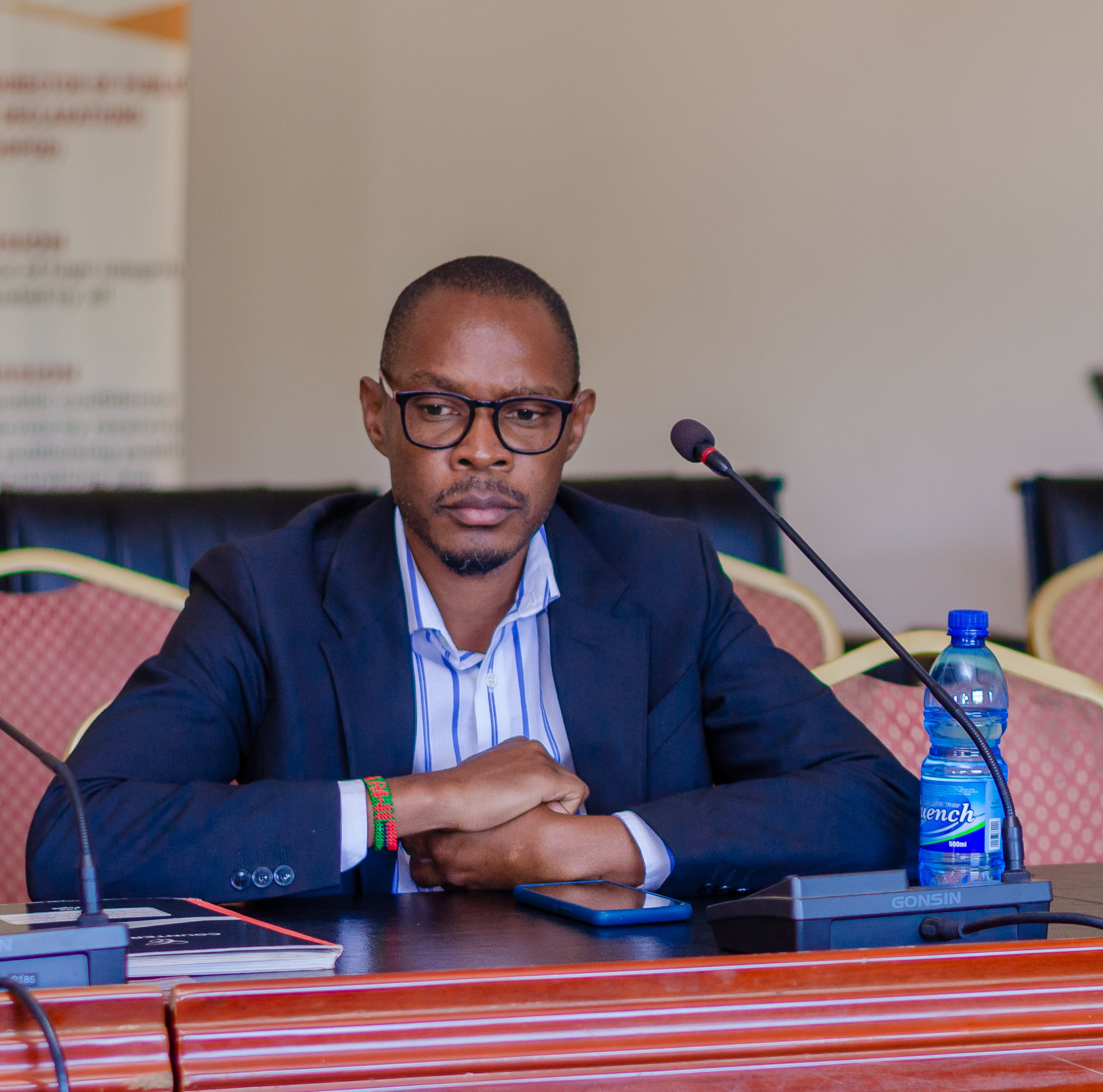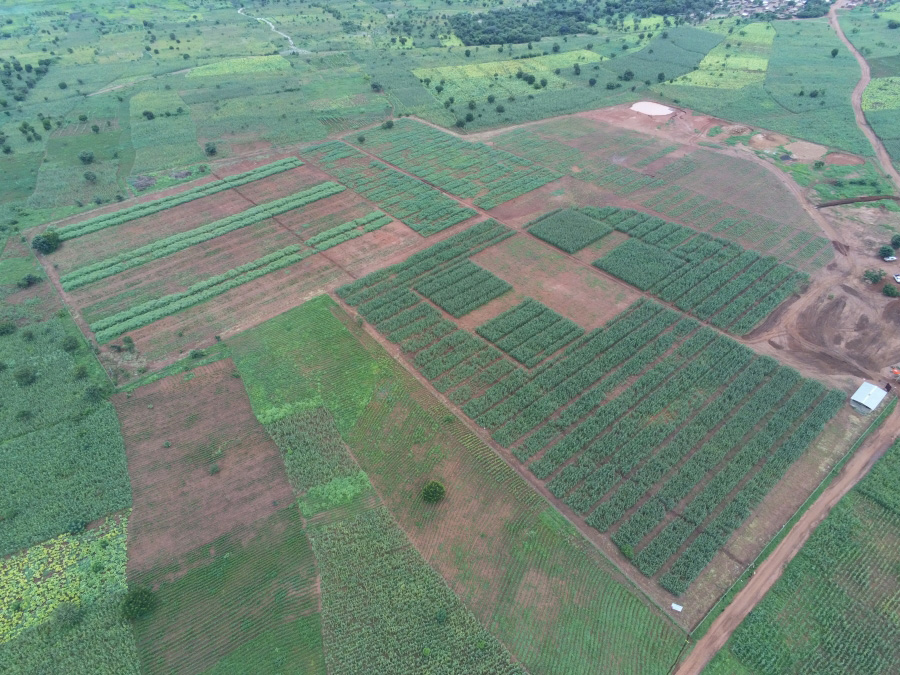Imports grab 30% cement market share Local manufacturers cry foul
There is a growing influx of imported cement brands, mainly the popular Dangotecement, on the Malawi market which is continuing to pose stiff market competition to the local brands in so doing threatening the future of Malawi’s cement manufacturing industry.
Investigations by Mining & Trade Review have revealed that Dangote Cement is emerging as a dominant foreign brand on the local market mainly in the major cities of Blantyre, Lilongwe and Mzuzu, squeezing out brands for local producers Lafarge Holcim Malawi, Shayona Cement Corporation and Cement Products Limited (CPL).
Statistics from local cement manufacturer Lafarge Holcim Malawi indicate that the imported cement has grabbed up to 30% cement market share.
Malawian traders are mainly importing Dangote Cement from Zambia where the African giant manufacturer has a plant in the City of Ndola.
Cement shop owners Mining and Trade Review interviewed in Lilongwe said the diminishing presence of locally produced cement on the market is due to higher prices of the local products as compared to imported brands of similar quality and strength.
“In my shop, you would find that a local cement brand of lesser strength is being sold at MK6500 which is the same price for Dangote cement with a grade 42.5R. So the local buyers prefer Dangote other than the local brands which entices us to order more quantities ofDangote cement,” said a cement distributor interviewed in Lilongwe Old Town, who preferred anonymity.
Mining & Trade Review got similar sentiments in random interviews with shop owners in Blantyre where besides Dangote there is an influx of other foreign cement brands including Ultra-Semi, PPC, Shuwa Cast and Sinoma, whichis manufactured by China Materials Company Limited Group – a Chinese multinational with branches in a number of African countries including Tanzania and Zambia.
Our investigations in Blantyre also revealed that some foreign cement brands are being smuggled in huge tonnage into Malawi from Mozambique, mainly through the Muloza boarder in Mulanje.
We also established that Dangote is a preferred choice for some construction companies which are hired by government to undertake large-scale construction projects which manifests that the government is issuing licenses to traders to import huge quantities of the foreign brand.
“We, contractors, opt for Dangote because of the pricing aspect. Ordinarily, the difference in prices between Dangote and local cement of the same strength needed not to be that much,” said a Blantyre-based Construction Entrepreneur Christopher Beula.
In Mzuzu and Mzimba, our investigations showed that though local brands mainly for Shayona Cement are in abundance in shops, Dangote is also emerging as a big competitor.
The Mzuzu Hardware shops are selling DangoteCement 42.5R at K7,000 and Shayona’s brands Thanthwe 42.5R and Akshar 32.5N at K6,000.
“We are used to the popular brands such as Akshar here though over the past few years Dangote seems to be winning a market share,” said a consumer in MzimbaVincent Gondwe.
Shayona Cement Corporation Operations Manager PrajeeshPadmanabhan commented on Mining & Trade Review readers’ forum that locally produced cement brands are encountering stiff competition from foreign brands because the taxation regime in countries such as Zambia from where most of the Dangote cement is imported is more favourable to manufacturing and export business while that of Malawi supports imports.
Padmanabhan said: “Zambia is already charging surcharge and duties if you have to import cement but Malawi does not charge any other tax a part from VAT (Value added tax).”
“Countries such as Zambia are also giving long tax holidays to manufacturers so any investor will be interested to invest in Zambia and export to its neighbouringcountries where there are no any duties.”
“Already Zambia has an excess production capacity while Malawi continues to saturate the market with imports that are draining foreign exchange.”
Responding to comments by Mining & Trade Review readers who raised the point that Malawi Government is not protecting the local cement industry as a way of abiding by the Common Market for Eastern and Southern Africa (Comesa) and Southern Africa Development Community (Sadc) free trade rules, Padmanabhan said it is possible for Malawi to protect the local industry by charging surcharge or through licensing as countries such as Zambia are doing.
CPL Chairman Aslam Gaffar concurred with Padmanabhan in bemoaning the current business scenario for local cement manufacturers describing it as unhealthy.
Gaffar said: “There is a problem with Sadc and these other regional treaties. Imports are tax free and yet locals in same field are heavily taxed.”
“Malawi will remain forever a dumping ground if we do not activate the Anti-Dumping and countervailing rules provided in these treaties.”
“Zambia charges a 40% import excise duty, plus 5% surcharge then 16% VAT for any cement imports, in Malawi not even VAT because our country has got its own Guptas.”
Lafarge Holcim Malawi’s Head of Marketing and New Solutions ChikondiNg’ombe said it is imperative for the government to ensure that there is a level playing field so that cement imports do not get an upper hand over locally produced products and also for Malawian exports to be supported.
“The level of cement imports into Malawi has risen over the recent years to account for close to 30% of Malawi’s cement market. While we appreciate the importance of competition, an unfair playing field in favour of imports will have the adverse effect of discouraging local manufacturing investments with consequent negative impact on employment and other manufacturing-linked economic activities,” she said.
Ng’ombe explained that in order to ensure that there is a level playing field on the market, the government needs to deal with smuggling by traders who do not pay taxes hence have undue advantage over local production, and crack down on apparent dumping of product from foreign players.
“As an example, cement brands coming into Malawi from Zimbabwe are sold at prices that are below the selling price in Harare. It would appear that such players are simply aiming at extracting the already scarce forex from Malawi into Zimbabwe,” she said.
Ng’ombe also said the government has to address the issue of uneven tax regimes between Malawi and its neighbours which is there in spite of belonging to the same Sadc bloc.
She explained that imports of cement into Malawi are not subject to any special tariffs but in spite of Sadcmembership, most of the neighbouring countries have placed cement on their list of sensitive products and apply special tariffs on the same to protect their local industry.
Ng’ombe said: “Malawi must look at the treatment by the different countries and, at the minimum, apply the same treatment to achieve a level ground. Failure to do this will continue discouraging Malawian exports while giving undue advantage to imports from those countries.”
She urged Malawian customers to keep up with Lafarge cement as their product of choice despite the market challenges saying the company places a heavy focus on quality to ensure that it has repeat business from its customers.
Ng’ombe said as a locally based cement manufacturer Lafarge ensures that local (MBS) and international accreditations (ISO 9001:2015) are maintained.
She said: “Importers cannot be subjected to the same level of scrutiny and accountability as it is difficult for customers to trace what they have bought back to the manufacturer.”
“Having said this, it should be notedthat the cement industry has in Malawi brought down prices significantly in real terms over the recent years. This is in spite of major escalation of key cost items such as power and fuel and other challenges such as power rationing. We hope that lasting solutions can be found on these issues in order to allow the industry to bring down production costs and make cement more affordable.”
However, spokesperson for the Ministry of Industry and Trade, MayesoMsokera, told Mining & Trade Review in an earlier interview that government gives licences to traders to import some cement to supplement the deficit from local production.
Msokera said, “As Government, we have the mandate to balance the needs of both the producers and the consumers with regard to availability of this essential commodity as well as its price, and the current cement importation does not amount to an influx.”
He explained that it is the government’s duty to stabilize supply and prices of cement so that they do not destroy the construction industry, which also employs many people and is an integral part of Malawi’s infrastructure and industrial development as it provides a growth impetus to other sectors of the economy through backward and forward linkages.
“We have had situations where cement prices rose to around MK12000 in 2017. Therefore, it is, essential that, cement availability and affordability is safeguarded for the healthy growth of the Malawi economy,” he said.
He, however, acknowledged the fact that some cement is being smuggled into the country and said, as Government, they are considering additional measures of curbing the problem.
“The Ministry is discussing with other Government agencies such as the Malawi Revenue Authority and the private sector stakeholder institutions so that issues of smuggling are addressed holistically. As a Ministry, we would like to appeal to the private sector to hold hands and collaborate with Government in order to loot out this malpractice bedeviling our manufacturing sector,” said Msokera.
He advised local firms to extend their distribution channels to supply their cement to all angles of the country including bordering districts where traders prefer importing from neighbouring countries as a cheaper option.
Msokera assured the local industry of Government’s support saying the Ministry is advocating for growth and development of local industries through the Buy Malawi Strategy, which encourages consumers to purchase locally produced products which are equally of good quality.
Both Shayona and CPL have invested in multibillion-kwacha construction of clinker producing plants at their factory areas in Kasungu and Mangochi respectively.
Shayona, which has a workforce of over 1200 mostly locals, has a comprehensive CSR programme which has seen the company constructing school blocks at a primary school close to the Kasungu factory, making drug donations to government hospitals and clinics, and planting trees annually in the factory locality to assist in environmental conservation.
Though its factory is relatively new, CPL also boosts of a CSR programme that has involved donating cooking oil making machines to members of the community in the factory area, constructing school blocks and procuring a transformer to electrify the area that hosts the factory.
Shayona Cement Corporation produces cement brands of various strengths including: Akshar, Buildplast and Thanthwe while CPL’s brands include Mkope and Njati.
Lafarge Holcim Malawi, whose cement brands include Khoma, Kumanga, Duracrate and Supaset, has continued to show commitment to Malawi with recent investments of close to MKW 1.5billion in a Soil Stabilized Blocks factory (14 Trees) in partnership with the Commonwealth Development Corporation (CDC).
The company is executing the investments in line with its ‘Kumanga Malawi’ programme which is aimed at supporting the Government and other stakeholders in developing Malawi.
Pillars in this program include sustainable building solutions, Small and Medium Enterprises support, Road and Workplace Safety, Employee empowerment and Product usage awareness/ training.
Records from the National Statistical Office indicate that in 2017 alone, imports of cement and clinker amounted to MK28.76-billion.
Dangote Cement, owned by Nigerian billionaire AlikoDangote, is Africa’s largest cement producer with a production capacity of 45.6-million tonnes per year.




































